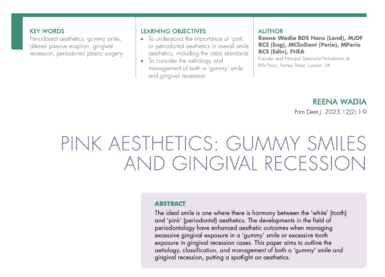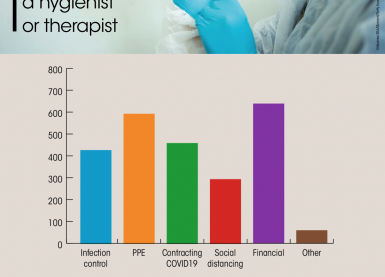November 20, 2015

According to the current NHS (Dental Charges) Regulations 2005, Band 1 covers the following
- ‘Instruction in the prevention of dental and oral disease including dietary advice and dental hygiene instructions’ and
- ‘Scaling, polishing and marginal correction of fillings’
Whilst a Band 2 includes ‘non-surgical treatment of periodontitis – such as root planing or deep, irrigation of pockets and all necessary scaling and a polishing’.
Ok, that’s pretty clear, but I wouldn’t be surprised if you still have several unanswered questions! These may include:
“Can I complete Band 2 in one visit?”
“Do I have to spend a minimum amount of time on Band 2?”
“Is there any fixed time limits and intervals between appointments?”
“Do I have to do extensive periodontal treatment in four visits?
“Does the reassessment form part of single course of treatment?”
“How does this all differ for the pilot contracts?”
So who better to ask than Dr Len D’Cruz, a current dento-legal advisor for Dental Protection who was also a PCT/NHS England advisor for many years and co-author of the popular ‘Understanding NHS Dentistry’ guide. I thought it would be useful to share a summary of our discussion on this pertinent topic.
There is no stipulation on the number of visits, the time spent or indeed the periodontal indices to measure as there was on the pre-2006 contract. There is also no stipulation on reassessment intervals. It is now down to clinical opinion based on the specific needs of your patient and what the evidence says.
Essentially Band 2 periodontal treatment could be carried out in two visits – the first would be the examination, special investigations and diagnosis. The second visit would be oral hygiene instructions and full mouth debridement. That could be the end of that course of treatment and the FP17 claim form could be sent off. Or the treatment could be spread over several more visits depending on need. The patient could be reviewed at a suitable interval e.g. 3 months post-treatment and either a further Band 2 provided or just Band 1 if the patient has responded well. This can be done in both the current contract and the pilots/prototypes.
It’s imperative to always make good notes and ensure clear communication with the patient. Patients don’t like surprises – make sure they are aware that they may require several Band 2 treatments over a period of time depending on their response and motivation. Don’t forget to also ask the patient to sign the FP17PR estimate form for each course of treatment.
Hope that’s helpful…now we should get back to debriding those pockets!



